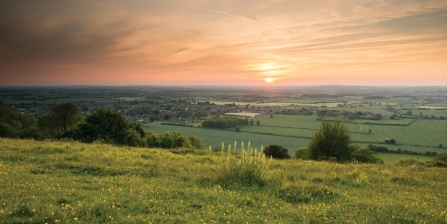
View from Chinnor Hill. Photo by Paul Martin
Protect wildlife for generations to come
A marbled white butterfly perched on a scabious flower by Lucy Colston - runner-up in the teenagers category in the BBOWT Photography Competition 2022.

View from Chinnor Hill. Photo by Paul Martin
With magnificent views over the Vale of Aylesbury, Chinnor Hill is a patchwork of flowery grassland, scrub and woodland, steeped in ancient history. The reserve is a great place to watch red kites soaring in the sky, as well as kestrels hovering above the slopes looking for prey.
Chinnor Hill falls steeply to the Icknield Way, part of the ancient Ridgeway. Made up of prehistoric pathways that follow the chalk 'spine' of England, the Ridgeway is thought to be Britain's oldest road. Why not explore the nature reserve as part of a longer walk through the area?
©John Hodson
A tranquil riverside marsh with great crested grebe, warblers and a colony of the nationally rare Desmoulin's whorl snail.
The Thames provides much of the reserve's wildlife interest. Kingfishers hunt across the water, and in summer, many dragonflies and damselflies emerge. Species of interest include the club-tailed dragonfly and the white-legged damselfly. The Thames Path runs through the nature reserve making it ideal to visit as part of a longer riverside walk.
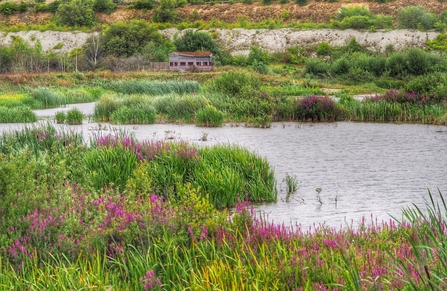
Claire Williams
College Lake is widely regarded as one of the best places in Buckinghamshire for water birds, and with many hides overlooking the lake, this is a great destination for bird watchers or for families throughout the year.
The nature reserve includes a visitor centre with a cafe. During the school holidays there are trails and events for all the family. This summer, help Ickle Owl find all his friends in our augmented reality trail at College Lake!
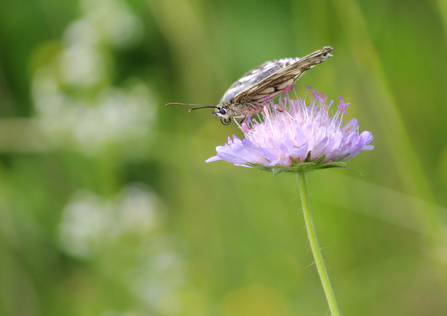
A marbled white butterfly perched on a scabious flower by Lucy Colston - runner-up in the teenagers category in the BBOWT Photography Competition 2022.
A rich array of chalk grassland flowers and insects in an undulating landscape. Flowering from June to September, common rock-rose provides plenty of nectar for various bees and is also the foodplant of several species of butterfly such as the brown argus and green hairstreak.
The vibrant hues of gentians, horseshoe vetch, harebell, deadly nightshade and hound’s-tongue also grace the slopes. This diversity of wild flowers in turn leads to a great diversity of invertebrates – including many of our most beautiful and rare butterflies.
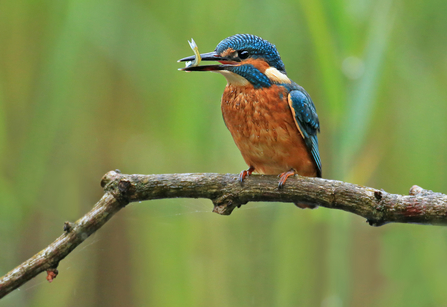
Kingfisher by Jon Hawkins - Surrey Hills photography
A fine old wet meadow characteristic of the Lambourn valley in days gone by, with a lovely array of wetland wild flowers and birds. In summer wild flowers include common fleabane, skullcap, common hemp-nettle and water mint.
Keep your ears open for sedge warblers and reed warblers and you may catch a glimpse of a kingfisher too.
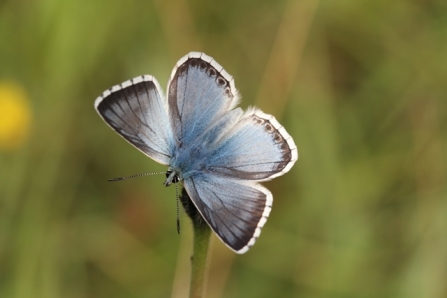
Chalkhill blue by Colin Williams
Nationally important for its archaeology as well as its wildlife, this ancient and atmospheric site has a wonderful variety of chalk grassland flowers and butterflies.
More than 150 plant species have been recorded on this old chalk grassland including horseshoe vetch, chalk milkwort, chalk fragrant-orchid, the delicate blue harebell and the purple-blue clustered bellflower. Its notable butterfly list includes the chalkhill blue, small blue, brown argus, marbled white and small heath.